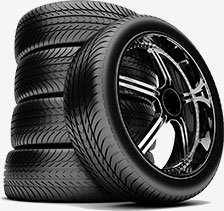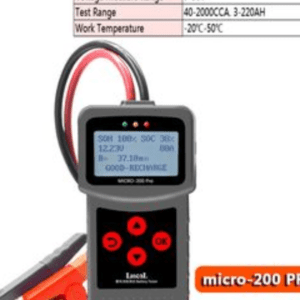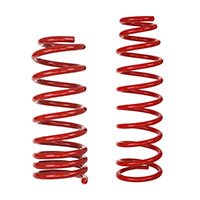Car overheating causes and solution
Car overheating causes and solution
Sometimes your overheating engine can be a simple problem to solve which you won’t spend money on a mechanic. And in some other cases, it can be very serious.
During sunny months as temperature rises, it can increase the likelihood for your car to overheat. Sometimes the way you drive when your car overheats can help you in diagnosing the problem. Today’s article will help analyze car overheating causes and solutions to help you diagnose the problem. And in return, it will save you money on a service that may not require a mechanic.
Here are car overheating causes and solution
HIGHER OR LOWER LEVEL OF ENGINE COOLANT
One of the most common reasons for car overheating is the higher or lower level of engine coolant.
The various reasons can be:
- A small, barely or non-visible leaks
- A loose cap on the coolant reservoir
- A low-quality coolant that evaporates over time, and others.
Having a higher coolant can produce additional pressure in the system. And additional pressure also leads to car overheating.
Note that the system pressure is normal when the coolant level is between minimum and maximum (the middle mark). Ensure regular check-ups of the coolant system and everything should be OK. But if needed, add some, but to the middle mark on the coolant reservoir (bottle).
By putting coolant frequently simply means that you have a problem; for instance, a leakage somewhere in the system.
LEAKAGE OF COOLANT HOSE
One other very common mishap that causes engine overheating is leakage of coolant hose.
And because of variations in temperature and a harsh environment, the hoses get brittle and lose their elasticity. What this simply means is leakage and losing coolant which will cause car overheating. The best way to solve coolant hose leaks is by prevention.
However, the best way is to inspect from time to time (perhaps once a year) to see that all of the coolant hoses are still flexible and elastic.
What to do is give the hose a press to see if the surface of the hose shows any cracks. A small, minor cracks simply means the hose is at its end and should be replaced as soon as possible.
A LOOSE HOSE CLAMPS
Another common cause for engine overheating is a loose hose clamps. This is because over time and due to pressure, the clamps tend to loosen up or even break. Also, the hose that the clamp holds in place gets shrunk over time, which causes the clamp to lose grip.
A loose hose simply means leaking and this means an overheating car.
It’s very simple to solve this problem, just buy the same coolant hose and the same diameter clamp and replace it.
A BROKEN THERMOSTAT
Note that the thermostat is essentially a switch. Its better said a valve which automatically reacts to the coolant temperature.
The thermostat is located in the coolant system so it can prevent or allow the flow of coolant. Whenever the engine is cold, it remains in the closed position (coolant flow is closed). What this means is that the engine heats up more rapidly.
However, once the engine starts reaching it’s working temperature, the thermostat begins to open thus letting the coolant flow freely through the entire system. But if it gets stuck in the closed position, then it’ll cause a car overheating problems due to the lack of proper coolant flow.
You must be prepared for at least one encounter with this problem, especially if you own a high mileage car. This is not much of a fuss to replace, not even that costly. Though mostly depends on the accessibility of the thermostat housing.
A THERMAL SWITCH ON THE RADIATOR
Note that the thermal switch is an electrical switch that reacts to the temperature of the coolant. What this switch does is to activate the radiator fan once the coolant exceeds the working temperature. Though it works on the same principle as a thermal switch on a clothing iron, for instance.
Whenever the airflow through the radiator is weak (for instance in city driving), what the fan does is to lower the coolant temperature. After some time, due to material fatigue, this thermal switch tends to malfunction thus not activating the fan. And this leads to the rise of coolant temperature and then car overheating.
One of the solutions to these problems is a thermal switch replacement, no improvisations is possible. Note that the most commonplace for the thermal switch is on the car radiator.
Sometimes the only problem can be the accessibility to the switch itself. However, thanks to most engine bay development and designs, it can be a pain to replace. Though not impossible, but still a pain.
A BLOWN OR DAMAGED HEAD GASKET
Note that between the cylinder head and the engine block is a main seal that assures a perfect connection. And without it, the engine won’t function properly. Once you start your car, oil and coolant would leak everywhere and the engine would lose compression in the cylinders.
Whenever the head gasket is blown or damaged, oil and coolant get mixed up due to the gasket separation of these liquids and their canals in the engine from one another.
So this leads to a mixture of oil and coolant.
One of the signs of this problem are constant overheating (less, in the beginning, progresses as the gasket sealing gets worse).
However, the most evident is whenever you open the coolant reservoir, you’ll see foam-like substance inside. Why this happened is due to the coolant and engine oil mixing together. Note that it is still possible to continue driving, but the situation will get worse over time.
Conclusion on car overheating causes and solution
As said earlier, an overheating engine can be a simple problem to solve which you won’t spend money on a mechanic. And in some other cases, it can be very serious. But with the causes and solutions listed, you would be able to prevent car overheating problems.




















